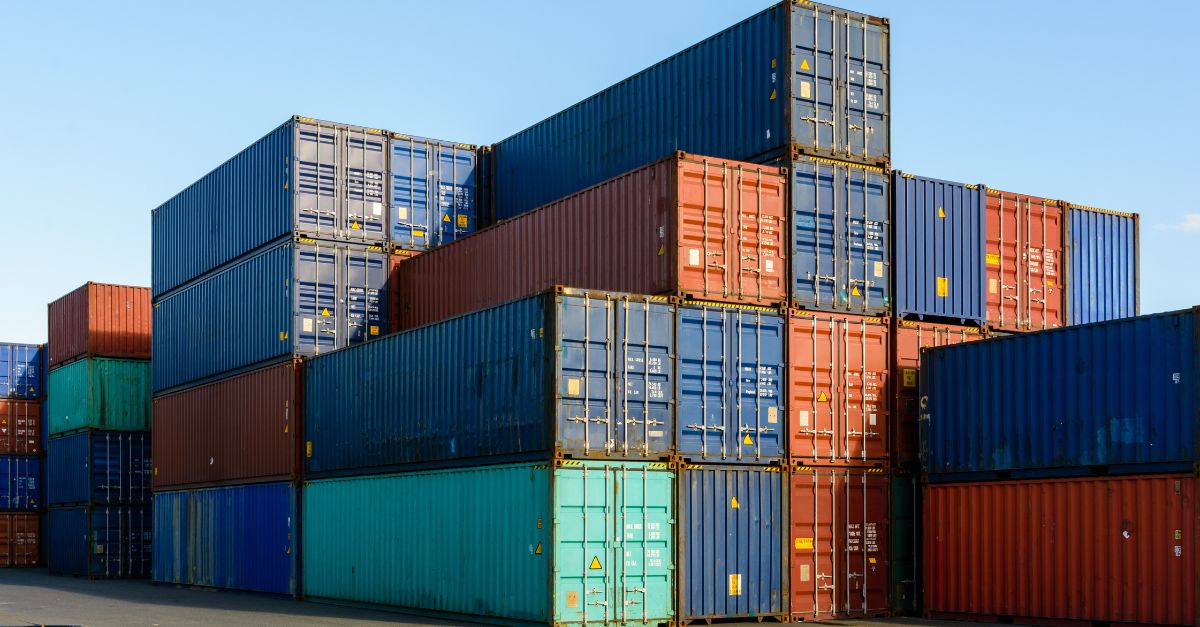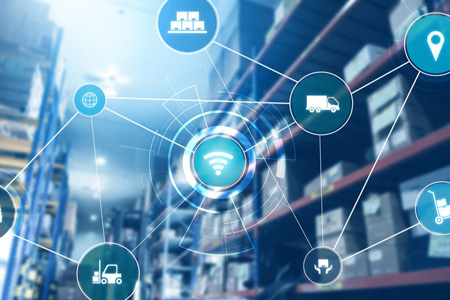
Strategic Sourcing Considerations for a Disrupted Supply Chain

Strategic Sourcing Considerations for a Disrupted Supply Chain
In this episode of Parker Avery’s,”Talk Retail to Me podcast,” we take a deep dive into strategic sourcing decisions for retailers and consumer brands. I interviewed Robert Kaufman, Parker Avery’s CEO, along with Senior Director Rob Oglesby, one of our resident inventory and supply chain experts.
With so many recent global and domestic disruptions it seems that what some are calling the new normal is still a long way off—if we ever get to a normal state— so how do retailers and consumer brands need to think and change their sourcing strategies amid so many unknowns?
Rob: I think the biggest thing that has to happen here is flexibility. In the past, everything has been about how to get the lowest absolute cost for the product. And that didn’t necessarily mean timelines were as important as they need to be now. A timeline has become extremely important because the lack of nimbleness and the lack of the ability to shift at a moment’s notice almost with regards to what’s going on in the marketplace has now been exposed, and as a result, brands need to start looking at a lot more factors with their sourcing strategies today than they perhaps were comfortable with over the last several years.
Robert: A lot has obviously happened, and as we found out during the pandemic—and maybe you’re still finding out—companies didn’t even know where their products were. As common or obvious as that may seem because of the complexities of the supply chain and the lack of true visibility, they might know who they’re paying—what they might call their supplier—but beyond that, there are a lot of things that were going on in terms of raw materials, suppliers, contracting beyond or behind those main suppliers that retailers and brands really didn’t understand. Beginning to better understand that is going to be critical.
It ties into visibility, but it’s really not just visibility. If you were to ask the question a year ago it was primarily from vendor to your company’s distribution center; but now, it’s the entirety of everyone that’s involved in the making of that product. And to your point about flexibility, until now, over the last 10 to 15 years companies worked really hard to eliminate waste and redundancy, and there really weren’t buffer inventories, if you want to think of it that way. So, when this pandemic happened, there was really no option to go to a different source of supply when your main link was down. Now, I think companies are going to have to start thinking differently about the criticality of certain finished goods, components, or even raw materials to avert things like this from happening—or not avert but be more prepared if and when something like this were to happen again.
Companies are going to have to start thinking differently about the criticality of certain finished goods, components, or even raw materials to be more prepared if and when something like this were to happen again.
Rob: I completely agree with that. It’s a big complex mess and, [these disruptions] really exposed it.
Speaking of that exposure, there’s a fair amount of unease, especially on the consumer side about where products are made, where things are sourced from especially if they’re coming from overseas, and particularly from countries that may not be as American-friendly. So, there’s an increasing desire for things that are made in the USA and even locally. So how do they how do consumer brands or retailers handle this, realizing that cost, price points, and visibility may not be as competitive with foreign-made counterparts?
Robert: There’s definitely going to be a push for near-shoring product manufacturing or sourcing. All of the factors you just said are going to drive that, but while cost is obviously an important consideration, the reliability of the supply chain is going to become a heck of a lot more important than even cost. So, when you think about what’s going on in a geopolitical sense, we have political disruptions that are happening around the world that can and will cause [supply chain] disruptions. Companies who will bring their product onshore or nearshore need to keep in mind that those things can and will have an effect. If it’s within the United States, it’s obviously a little bit different, but outside even if it’s closer to the USA, those things are still going to be important.
I mentioned the supply chain visibility and traceability—just to bring a real-life example right now with the Uyghurs in China that are being imprisoned by the Chinese to produce cotton and cotton products in a lot of the fashion supply chain today. There is an enormous outcry that’s beginning, and it’s going to really get to a fever pitch and companies are going to need to really understand what and where their products are being sourced from—all the way from the raw materials. You factor all those things in, and lastly, proximity to the end consumer. Is the labor cost more in the USA than in other places around the world? Assuredly it is, but because companies are becoming much more concerned about building inventory in advance, which was maybe not totally the approach they would take, they would assume their upstream customer was going to buy in a certain quantity. But now, their customers aren’t asking for as many and they are asking their suppliers or brands to be very nimble and replenish very quickly. By being nearshore or in the USA and having the ability to respond becomes viable and possible, whereas if you have an extended supply chain overseas, you’re adding travel and transit as well as 30-40 days in many instances. Having more control over your supply chain is going to bring that reliability, likely reduce the lead times, and albeit maybe cost a little more—in the end, provide you with more value and assurance to their customers.
Rob: You hit on so many valid points, in particular the nimbleness. If you’re near-shoring, you can make decisions much later. The closer you are to demand, the more intelligent that decision is, so you’re able to make better buys, potentially buy less or more of a particular product, and keep your margin as opposed to putting a bet on something that’s nine or more months out in the future—what’s traditionally been the lead time for the past 15-20 years. Making decisions that far out, you just don’t know what’s going to happen, and your sources could dry out or go into a situation where they can’t produce, which causes major issues. Whether it’s “made in the USA,” that certainly has a caché to it and in the geopolitical situation we’re in right now, that may have some benefits to it, but in my mind a lot of that—it’s beyond just that—it’s just the smarter way to operate.
Think about what Dell did many years ago: they put their factories right across the street and they almost had conveyor belts going right into where they were assembling computers. It was literally: you placed an order for a computer, and that triggered an order for a chip to be made. Are we going to get to that? No, not quite. But a lot of what you look at from a cost perspective needs to be re-evaluated. Before it was the lowest possible cost of the product, transportation be damned, etc. That thinking has to go by the wayside.
There are a lot of benefits to be had if companies are able to get closer to where their markets are and be able to turn their entire product lifecycle much faster, that’s where the winners will be.
I think another thing to think about: brands are global. They’re not just US brands. Yes, a lot of them may have their headquarters here, but we work with clients that have stores or some sort of an operation with their brand in 100+ countries worldwide. And all of those deserve the same kind of proximity. So that goes back to Robert’s comment about multi-sourcing, because if you have all your eggs in a single basket, and that particular situation goes into an area where they can’t produce or their factories get shut down. Look what’s going on in India—they’re quickly trying to overtake the US with regard to case quantities. They’re in a world of hurt; that’s becoming a big production for fashion. As things move out of China, India’s becoming an area where we may start having the same types of issues trying to get products out of India. Getting that product closer too is a big deal.
Finally, the concept of blockchain and knowing where products and materials came from because there’s the social responsibility that adds to this, and people are demanding it. They do not want to be wearing a garment that came from a sweatshop or out of a dangerous situation, where people are walking into work and essentially putting their lives at risk because they’re working in a building that’s getting ready to burn down. That’s also stuff we’ve seen with our clients, and it’s a horrific situation. There are a lot of benefits to be had if companies are able to get closer to where their markets are and be able to turn their entire product lifecycle much faster, that’s where the winners will be.
We talked about transparency, and it’s obviously still a big factor. So, if that’s a big push, it’s also a major change from an organizational perspective. How do supply chain organizations need to change?
Rob: A lot of our clients do have sourcing offices. It’s a matter of those sourcing offices having a lot more play and say—and visiting not just the factories that are making things, but also understanding the raw material piece of it. And getting involved in positions in those raw materials, because if you do that, you have to go deeper into the supply chain.
The other thing I’ve seen is that there are compliance organizations that can be partnered with. These organizations do audits and leverage that information across multiple companies as the single source of the truth. I can see more of that coming online and people demanding those types of audits. It does pressure the sourcing organization, and if you’re close to a market, you’re going to need to have some sourcing resources in there, so it will spread them out. A lot of our clients had a single sourcing office, more than likely located somewhere in China or Hong Kong close to that general area of production, and that may not be enough anymore.
Robert: You’ve touched on a few really interesting points about social responsibility, and with what’s going on in the USA now with a lot of protests and such, and even before the pandemic, there was a real push on sustainability and understanding where products were both being made as well as where they’re going to go afterward: a full lifecycle for those products. What it really is going to boil down to, and we’re not quite there yet, but I would say that within the next 18-24 months it’s going to be table stakes: you’re going to be able to walk down an aisle of a store, and you’re going to be able to use your phone to scan the UPC, barcode, or QR code; and you’re going to be able to see everywhere that product was manufactured as well as the raw material sources all the way back down the supply chain. It’s imperative: besides the social responsibility and audits, which have been around now for 10-15 years—and there are flareups where problems still occur—we’re going to go well beyond that. You’re going to be able to see where that product has been all through the supply chain, and consumers are going to make decisions based on that. If it’s made in the USA, and it costs 20% more, but they see that supply chain and know it’s verified traceability, that’s going to mean something too. Not that companies are all going to pay lip service to social responsibility, but it’s going to be a mandate or requirement now for doing business because it is going to be fully exposed.
One of the things that I think companies can also do in support of that—it’s more of a technology play—with artificial intelligence and what has been called “supply chain digital twin” where you can simulate through a technology how that product is going to go from source (even pre-finished goods) all the way through to the completion of the product and the delivery to a brand’s distribution center or stores. And what’s really cool about those capabilities, besides the initial simulation is: there are examples today, where through the internet of things (IoT) connectivity, as things happen, the digital twin can understand and receive that information and then reroute the product accordingly, based on alternatives that it’s already played out in various simulations. So that sounds really blue sky and not everyone’s doing it yet, but again AI/ML—yes, it’s not quite everywhere in everyone’s solutions, but the leaders are going to have that. Applying that type of technology to the supply chain to be able to solve some of those questions of, “How do I get my product if and when and there are problems?” is also going to become a real requirement to just be viable in the near future.
Rob: It’s almost like you go back to your comment about visibility: that’s visibility on steroids. Just imagine: you want to reroute a shipment—if you can send a signal down to change the destination of that QR or barcode or RFID or whatever the tagging process is being used—at the next destination point, the product can be automatically rerouted—that is flexibility beyond measure. I can envision that coming in the not-too-distant future.
You said, “Not too distant future.” Is that two years out? Five years out? And related to that, who is at the forefront of this technology?
Robert: I’ve been in conversation with some supply chain companies that we work with that are really pushing this concept of a digital twin. They have some technology that may be not quite as extensive as I described, but they are building it. Not necessarily tied to machinery and IoT, but to be able to do those simulations.
There are companies in our industries that have those capabilities. From the adoption of our clients, there’s not been a whole lot of that. Ralph Lauren—while it’s not quite the same—but you can scan a Polo Ralph Lauren barcode and determine a few things about their product. First, is it a valid RL product or is it a grey market product? The way you can tell is if you scan it, it will go all the way back to the farm from which the cotton (if it’s a cotton product) was sourced, so you see all that visibility. They’ve now made that for branding reasons and to eliminate some of the counterfeitings that happen. So, companies that maybe you don’t think of as progressive, but from a brand protection standpoint are doing those kinds of things.
To answer your question more directly: some companies are there, but it’s going to take, I’d say, the next 18-24 months for brands that are going survive and thrive to really adopt those types of capabilities.
In an industry where traditionally (pre-COVID), retailers were pretty hesitant to adopt newer technologies. They can’t be like that anymore—they’ve got to move forward and they’ve got to move fast. You’ve got to be “scrappy” in a big way now because they just won’t be viable. Any words of advice? What’s the first step for retailers and consumer goods brands?
Robert: It’s really looking at their supply chain holistically. I alluded to it a moment ago: incremental change isn’t really what’s going to move the needle for them. They can deploy incrementally, meaning, “Let’s build the holistic, transformative capability set, and we might deploy it in a pilot and then roll it out.” But just taking piece-by-piece isn’t going to work, so coming up with that supply chain strategy.
Not to be trite about it, but what is that future capability set? How do they want to operate? Do they want to be an onshore capability for production or for global brands, at least having the option of a source of supply in North America? Making those key decisions and building that strategy is the first step and then not putting it in a drawer and saying, “That’s our 3-year strategy and we feel really good about it.” Take action. Deploy against that strategy, and again, that all may seem obvious, but there’s just not time to think about things too much. You’ve got to move because there’s so much going on right now. That’s another thing the supply chain software president said to me: “It’s been kind of quiet for the past three to four months, but all of a sudden companies are coming to us and asking not to just put in one or two modules—they want to take transformative massive leaps of capabilities.” I think that’s indicative of the leaders of our industry.
Rob: Obviously, we’re talking about the supply chain right now. But this impacts the entire organization. Think about the merchants: their entire metrics set and how they are incentivized has to come along for the ride, because if we near-shore products and all of a sudden your first cost goes up—if they push back, then you don’t have that synchronicity. You need to look at what the final margin is on products. So, some of the KPIs across the organization must be considered. To be nimbler: there’s a huge value, but the initial margin will be impacted. You need to look at overall profitability because of better sell-through and lower costs through the supply chain. That becomes the real win for the organization. You’ll bring more people on board because it’s understanding the bigger picture. The former picture of success is no longer relevant, and success needs to be redefined. That’s how the organization will survive. If they can’t make those changes with everyone on board, it will not be a good situation for many of these companies. It’s a massive transformation.





